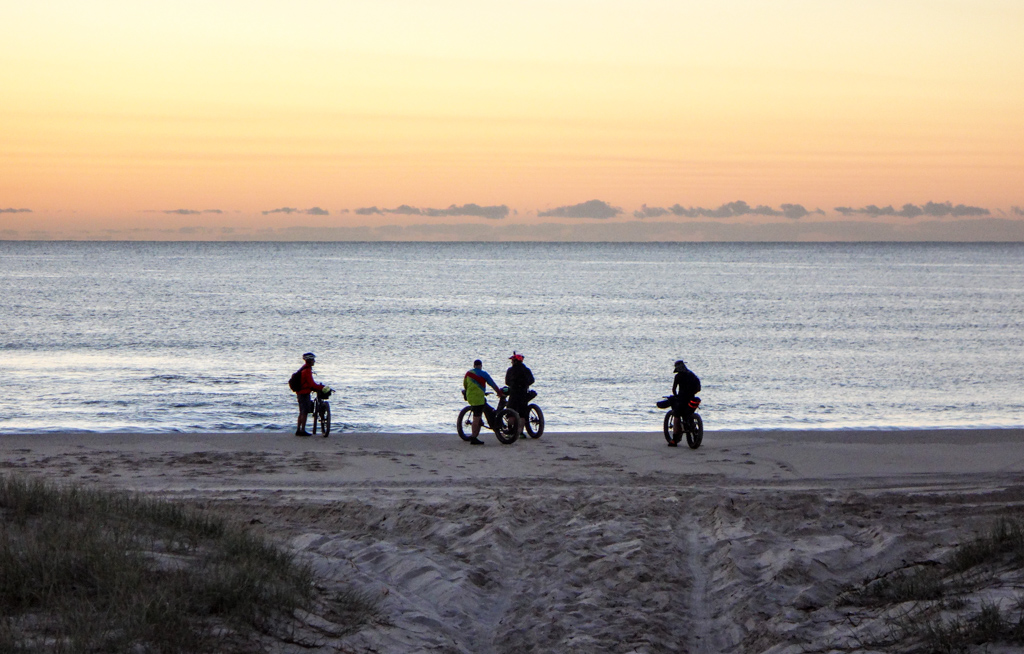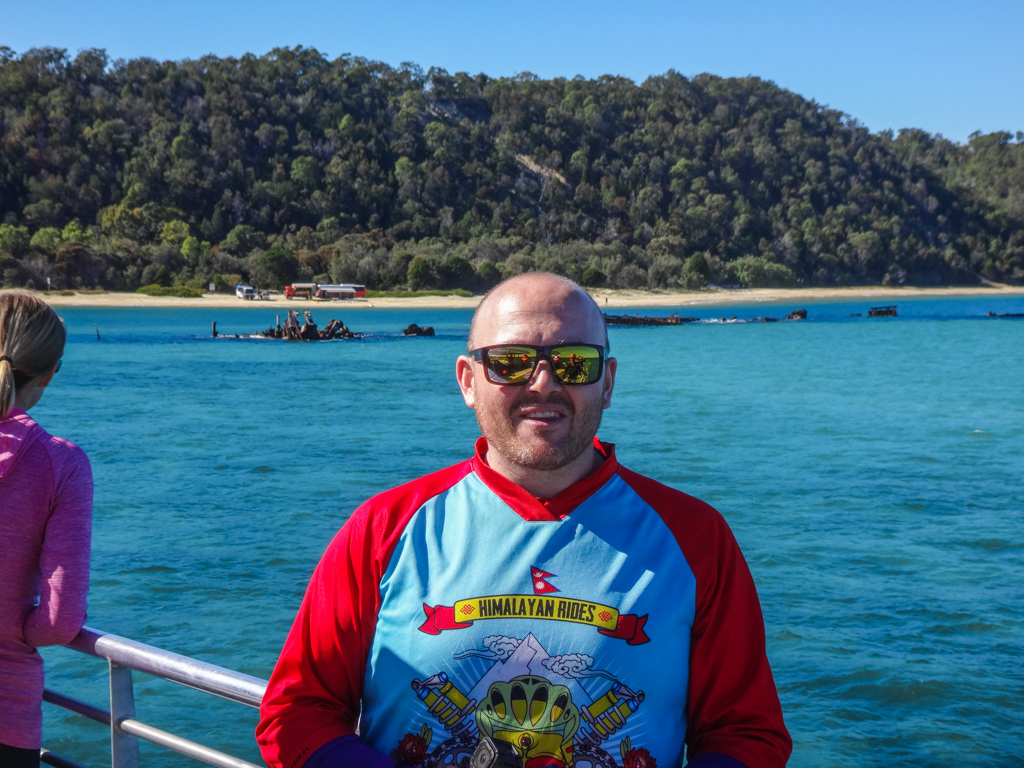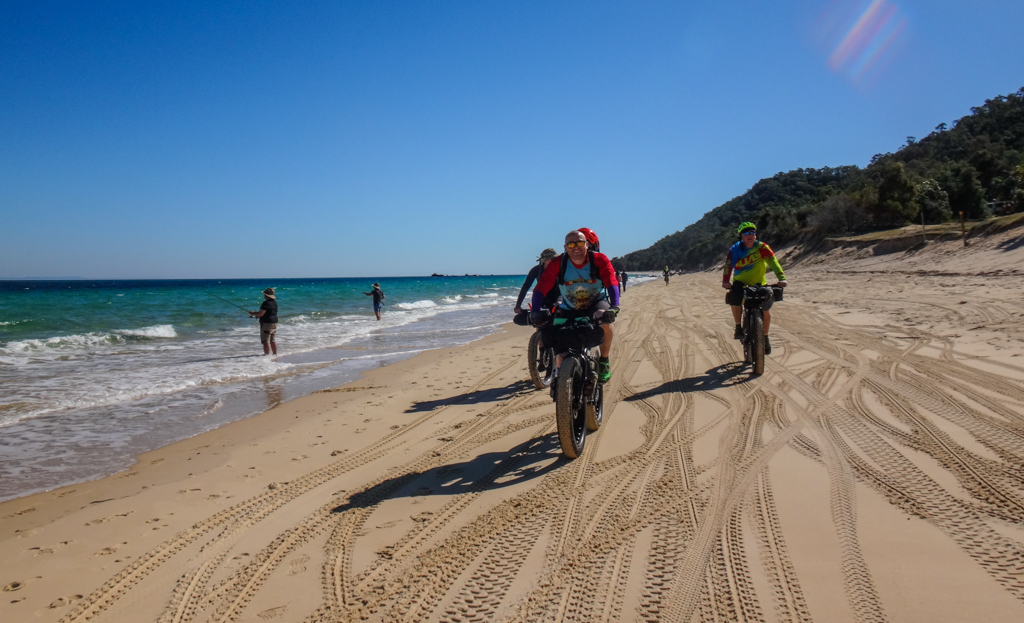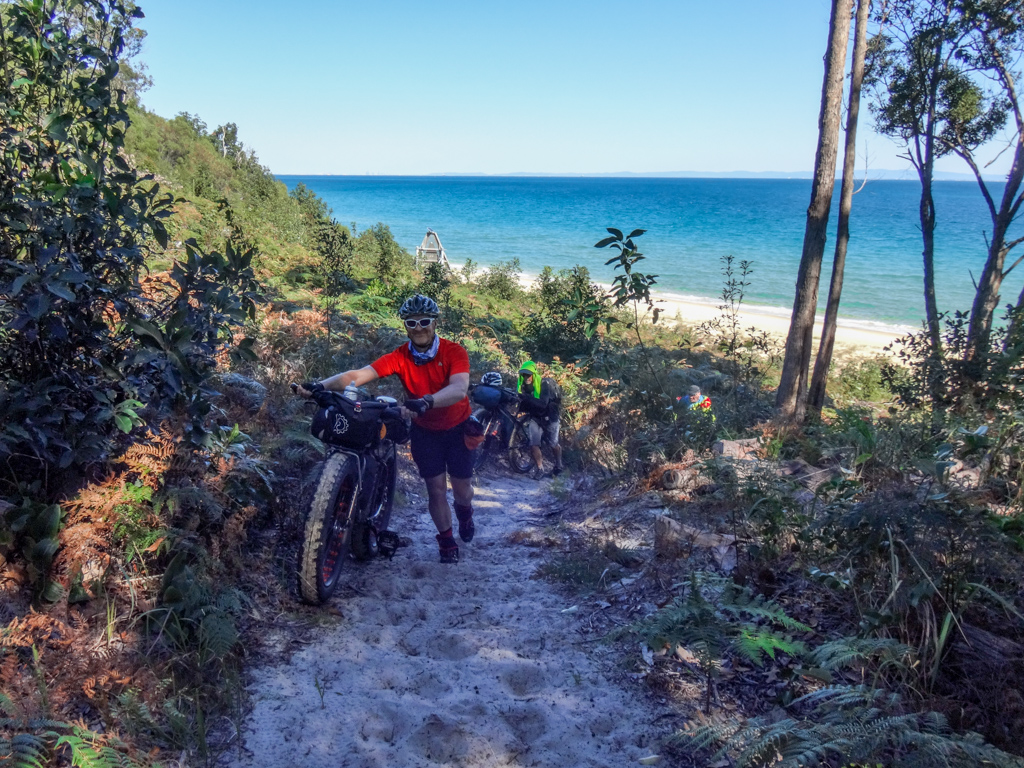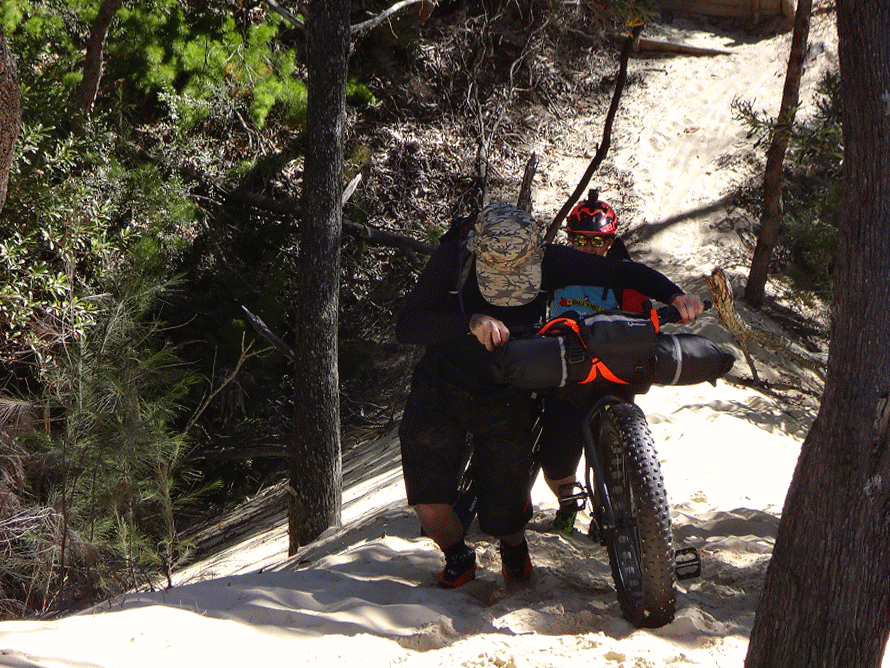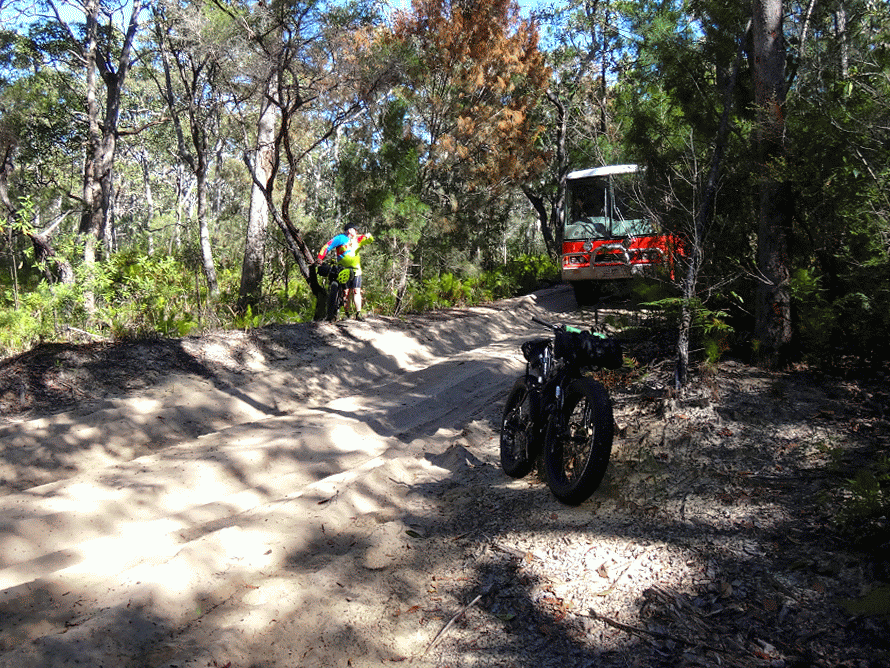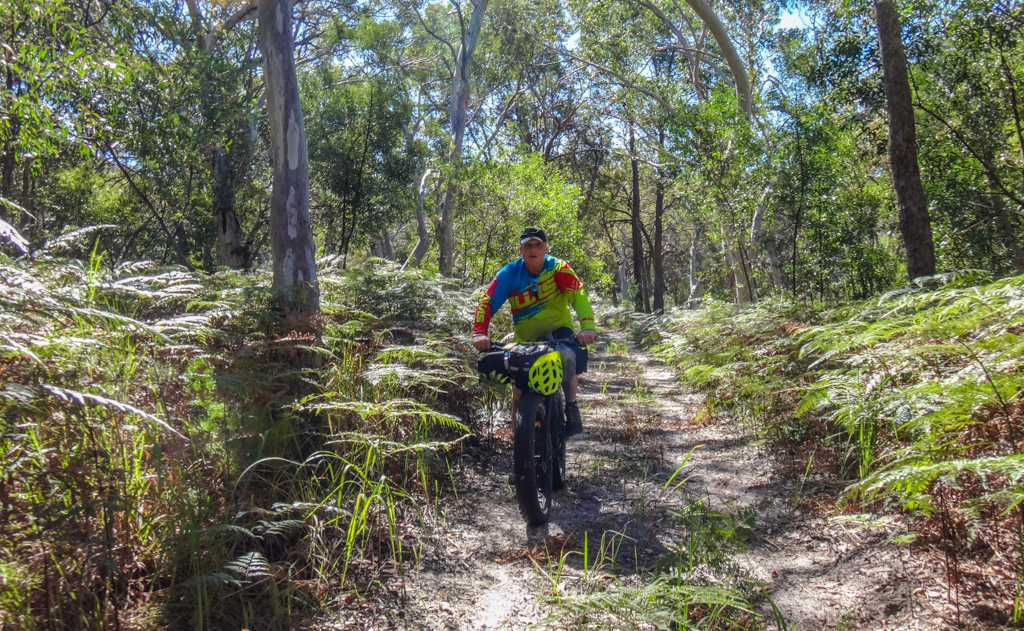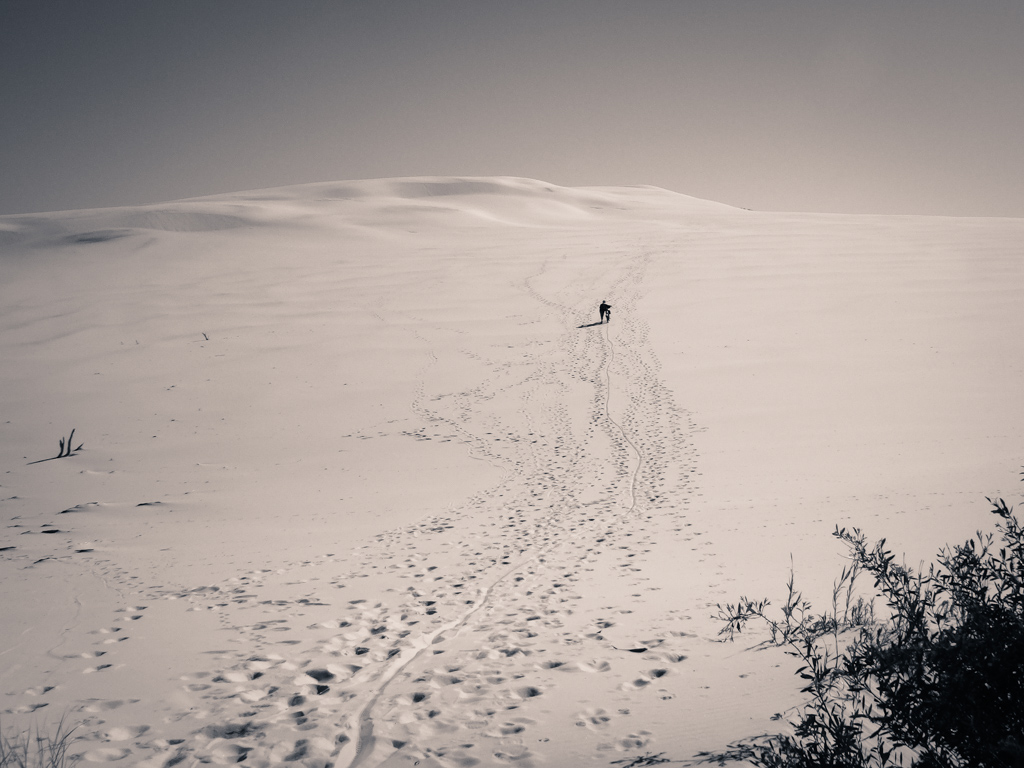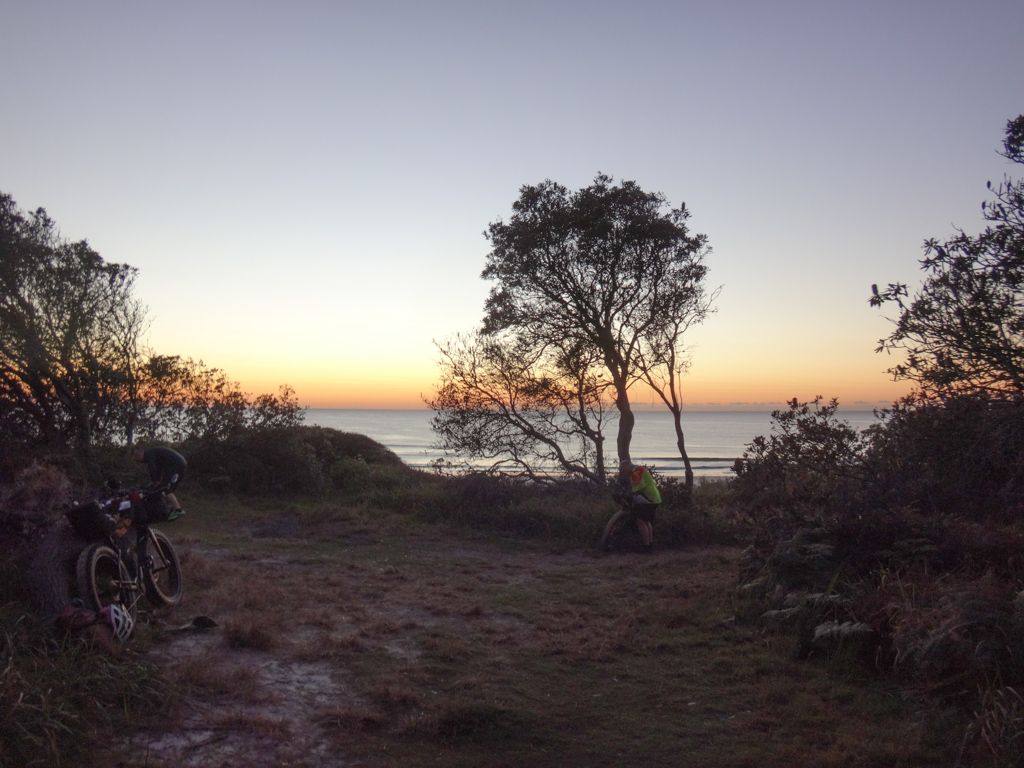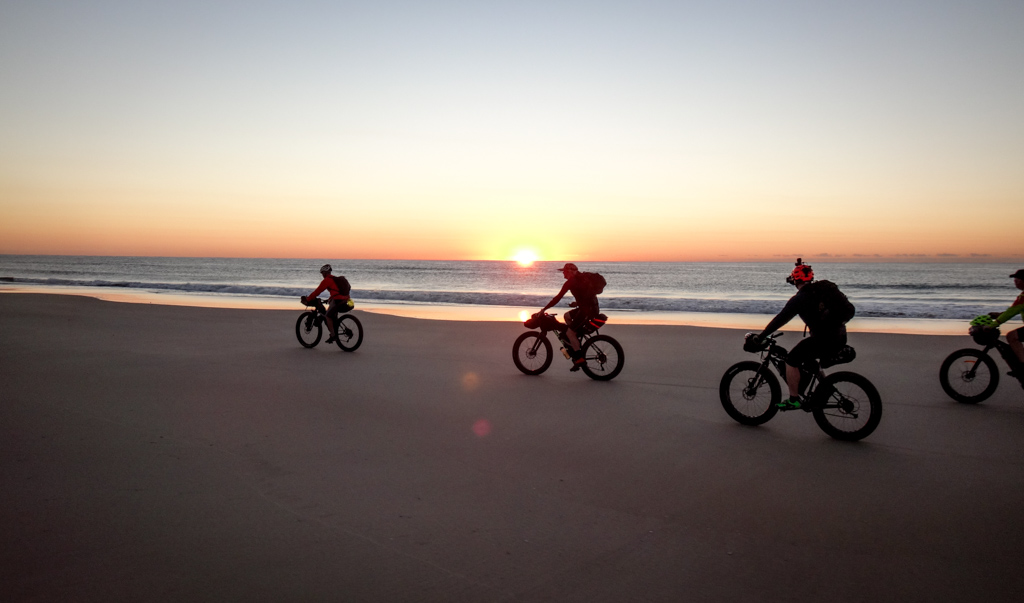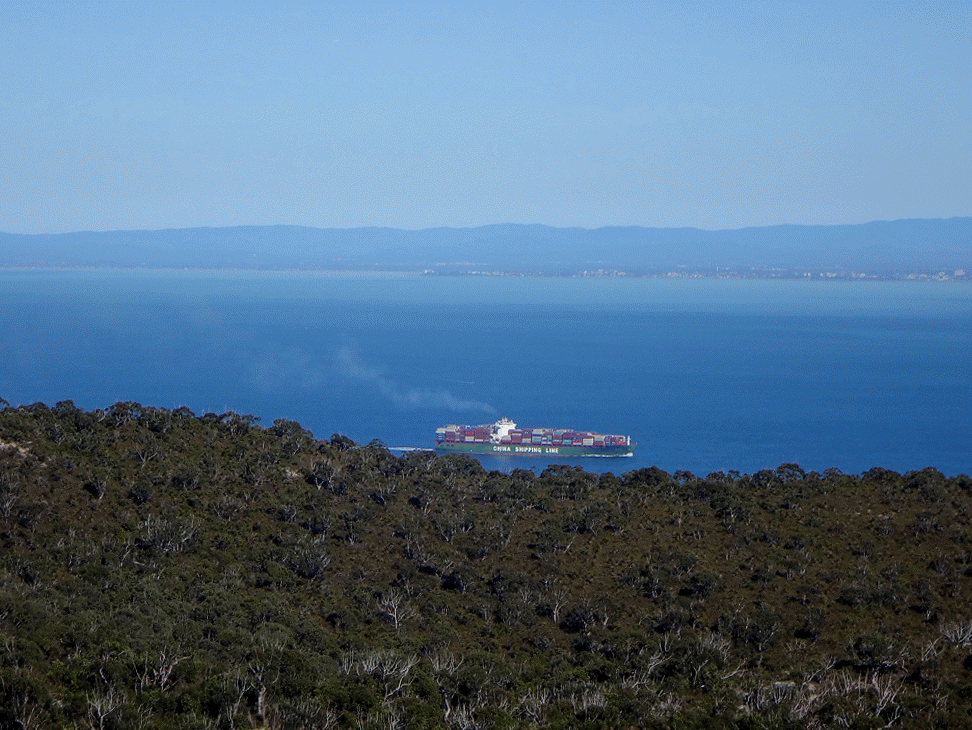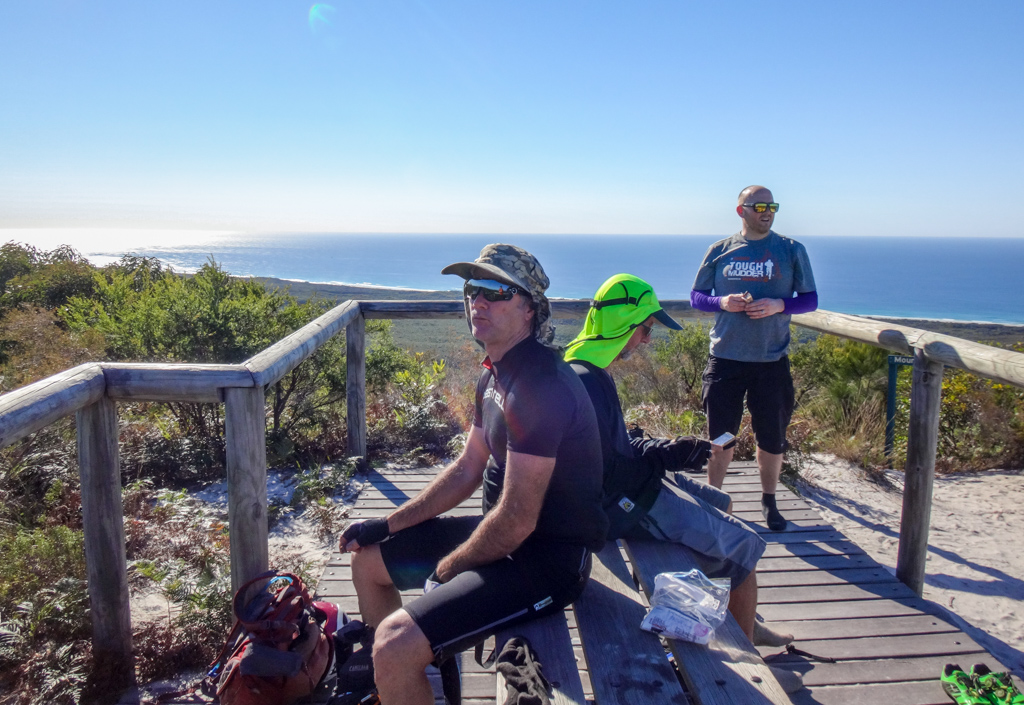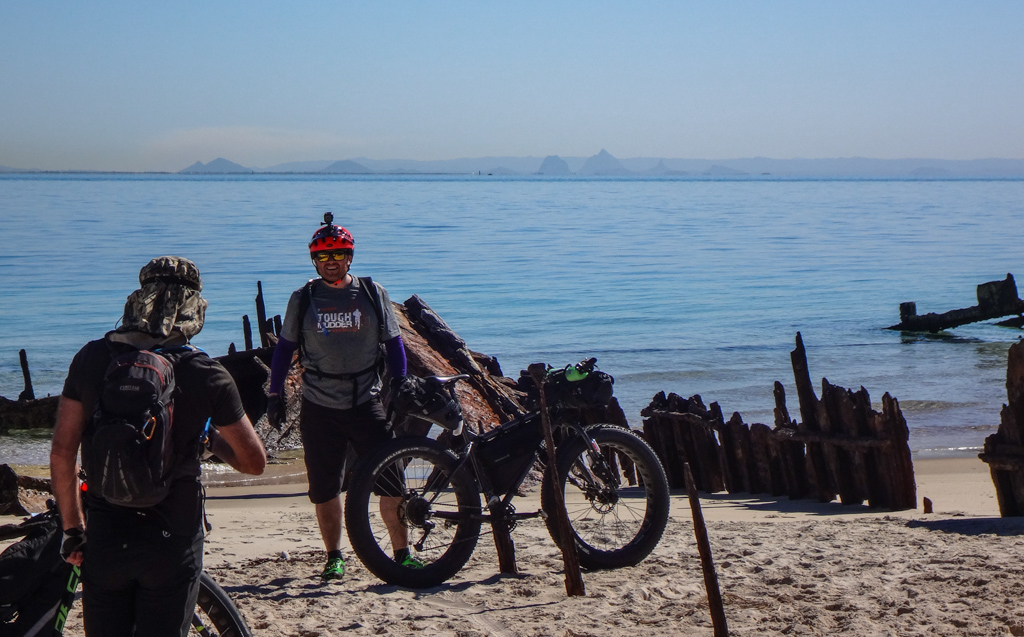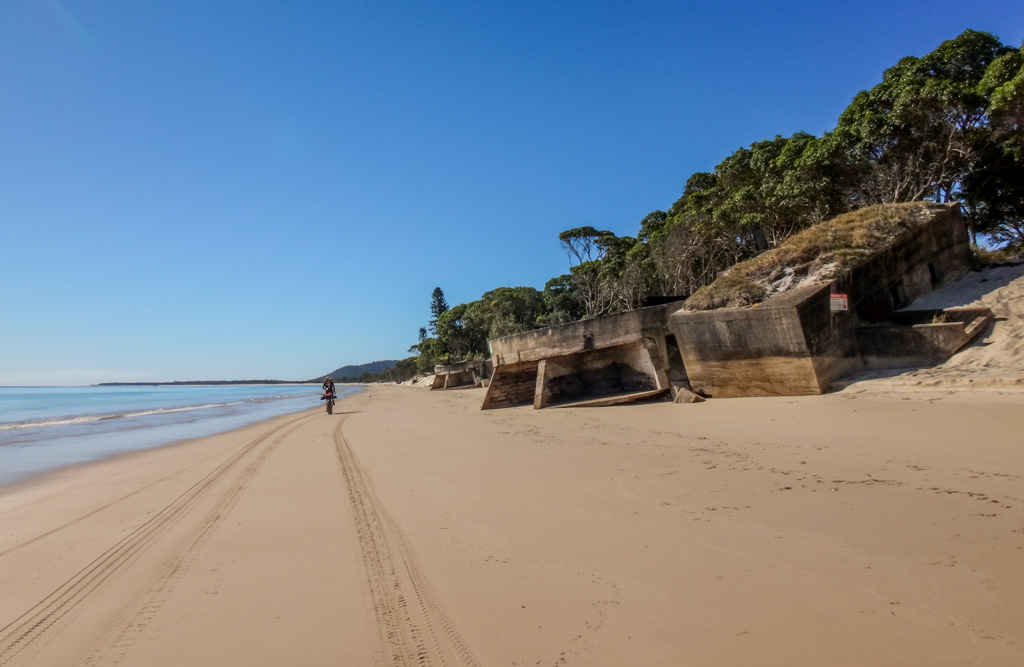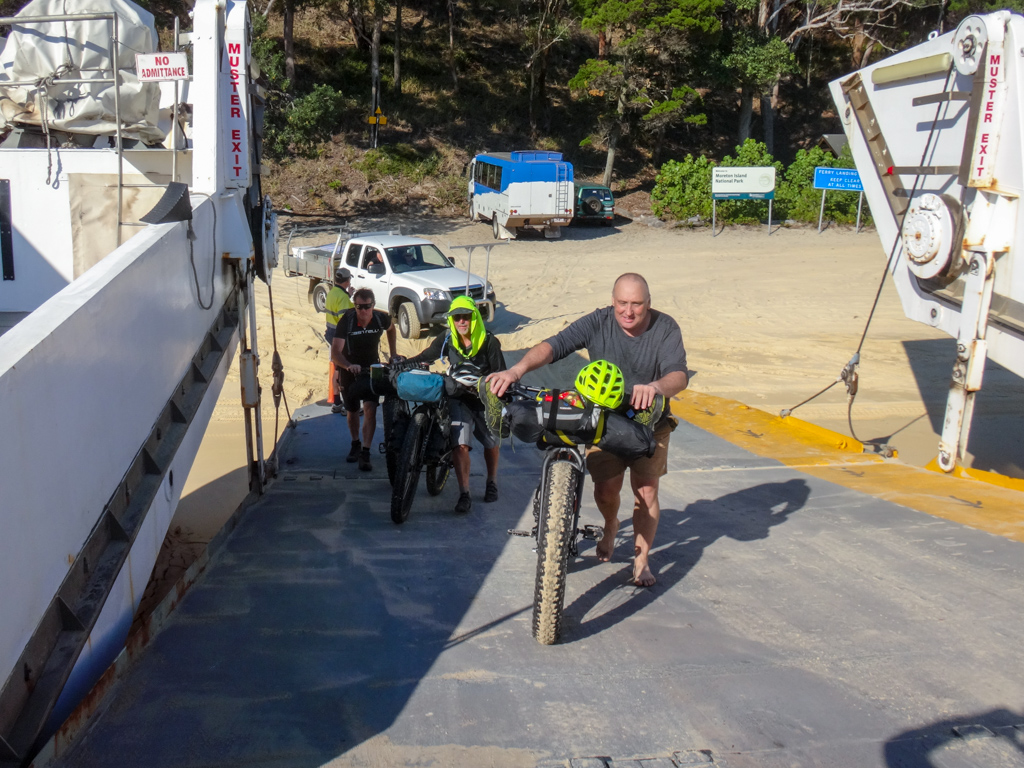Winter, with its clear skies and cool days, is the perfect time to visit Moreton Island. And best of all – by visiting mid-week, we had the place to ourselves.
Six of us loaded up our fat bikes, and rolled them aboard the Micat ferry for a seventy-five minute voyage across the sparkling turquoise waters of Moreton Bay.
My friend, Adi, was visiting from the UK. He had originally asked if he could borrow a mountain bike to go for a ride on local trails.
I countered with a more daring idea. “How about we go fat biking on the second largest sand island in the world instead?”
He thought that was a good idea 🙂
After a short cruise, the Micat disgorged a couple of dozen happy visitors directly onto the sand at the Tangalooma Wrecks.
We coasted down the ramp and onto the beach.
It was high tide. We had to pedal hard on the soft sand for a couple of kilometres, but that didn’t matter: we were glad to be here.
After about ten minutes, we left the beach and pushed our heavy bikes up some stairs to a walking track.
Pushing loaded fat bikes up stairs is hard work.
Pushing loaded fat bikes up steep, soft sand is even harder 🙂
The “Little Desert” is a vast bowl of sand. We stood atop a high ridge to the east overlooking the expanse.
At first, our tyres squirmed slowly in the loose sand around the edges.
My bike suddenly accelerated after I rolled over firmer sand.
I let out a “whoop!” of delight.
It was difficult not to smile.
On the other side of the “Desert” we moved aside to let a tourist bus drive by. It swerved precariously in the deep tyre tracks.
After a few minutes we left the vehicle track for the solitude of Rous Battery Track.
This is a gated track, closed to motor vehicles.
We could relax and ride at our own pace.
Bracken Fern lined the shady track.
The surface was firmer and easier to ride on because it hadn’t been churned up by cars.
We stopped to explore the old Second World War gun placements.
Over seventy years ago, young soldiers looked seaward from here, vigilant against an enemy that never came.
I wonder what they’d think of us?
We quickly set up camp, lightened the load on the bikes, then set off down the beach.
We still had a long way to go.
The tide had fallen.
Secluded wide beaches stretched endlessly before us and ahead.
What an amazing place!
After half an hour riding down the beach, we again headed inland.
This time we stood on the edge of massive sand hills.
Which way to go?
Eric’s tyres were “only” three inches wide. He found it hard to ride on such soft sand and started walking over the dunes.
We rode some of the way….

…and when the sand was too soft we walked.

This is a stunning place.
We felt dwarfed by its vastness.

To the west, below us, lay Moreton Bay.
On the distant horizon we could just make out the city buildings.
We rolled down the other side of the dunes, then headed south towards the bottom of the Island.
Eventually we reached “The Gutter Bar” – a small bar in the village of Kooringal.
We relaxed and had a few beers.
Adi met a friendly parrot.
The sun slipped lower.
Eric challenged us. “C’mon guys. We’re burning daylight!”
We were a couple of hours away from our camp, and had less than a couple of hours daylight left, so we set off up the beach.
At a couple of places we had to step over dead trees which blocked the beach right down to the water.
Shadows lengthened in the red late-afternoon light.
Temperatures dropped as a cold breeze drifted in from the sea.
We arrived back at our camp site in the dunes just after the sun slipped below the horizon.
The sky magically changed hues and darkened: orange, salmon, indigo. All was silent except for low rumble of the surf.
We sat around the fire and cooked our meals.
I was glad I’d brought a head-lamp, which freed up both my hands so I could prepare my meal.
Half an hour later, after total darkness descended on us, an almost-full copper-red moon slipped above the eastern horizon.
Above us, a host of stars sparkled silently.
In the morning we had about an hour to ride up the beach before we lost it to the rising tide.
This meant we had to get up and pack our gear while it was still dark (thank goodness again for headlamps).
It also meant we couldn’t have breakfast for a while.
Yesterdays sunset played out in reverse.
The pre-dawn sky slowly brightened as we rode up the beach.
The sun rose suddenly.
Although it happens every day, it still surprises me with its simple beauty.
We made it to Middle Road just as the tide was starting to reclaim the beach.

We would be heading inland from this point, so we no longer had to worry about tide times. We relaxed in the dunes and had a well-earned breakfast.
After a short break, we followed Middle Road west towards the Mount Tempest walking track.

We left the bikes at the bottom of the track and walked to the top.
The views were stunning.
To the south the coastline curved slowly away towards Stradbroke Island.
Eastward, a container ship steamed slowly out of the azure-blue bay to distant lands.
Called “Moogar Bippo” in the Quandamooka language, meaning mountain of storms, this is the highest permanent sand dune on the planet.
We could see forever in all directions.
We walked back down the mountain, then rode north along the “Telegraph Track”.

This long, straight trail is closed to motor vehicles, which means the surface remains firm and ride-able.
But it’s steep in places, which forced us to walk up a couple of hills.
After battling a few more kilometres of soft sand towards the north of the island, we arrived at Bulwer, hungry and thirsty.
The Bulwer shop served up some delicious steak sandwiches and cold beer.
After about an hour at the shop, the tide had receded enough for us to ride on the beach again.
From the wrecks at Bulwer we could see across the bay, over the low-lying land of Bribie Island to the Glasshouse Mountains. Behind them, framing the western horizon lay the D’Aguilar Range.
We live in a wonderful part of the world.
Our short trip was almost over.
We rode down the beach back towards the ferry…
…past more relics from the Second World War.
As with most trips to Moreton, I felt like we could have / should have spent more time here.
As departure time approached, we pushed the bikes up onto the ferry for our return trip home.
Total climbing: 690 m
Average temperature: 21.8
Total time: 07:07:45
Total climbing: 972 m
Average temperature: 20.3
Total time: 08:24:35
Day 1 Stats: We rode forty-two kilometres in seven hours including breaks. During that time we climbed about seven hundred metres. Tough-o-meter score: 7.5 out of 10
.
Day 2 Stats: We rode forty-four kilometres in eight and a half hours including breaks. During that time we climbed almost one thousand metres. Tough-o-meter score: 8.5 out of 10.
Thanks to Eric, Simon, Jason, Adi and Troy for sharing this adventure with me.
Thanks also to Wayne for the generous loan of your fat bike.


